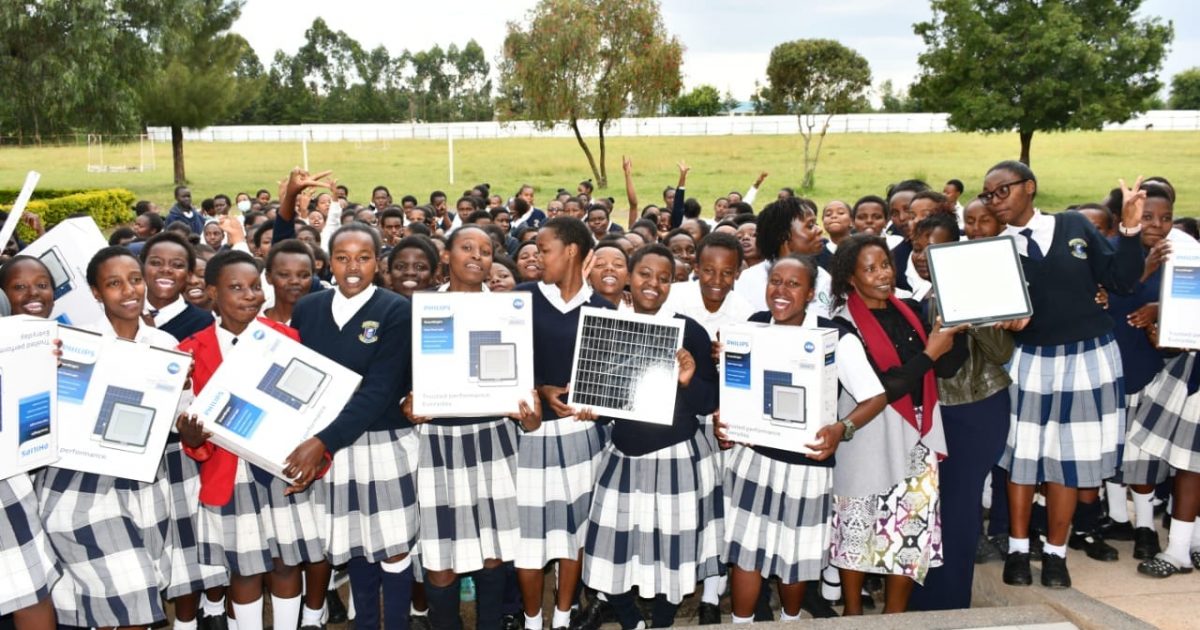At least 30 secondary boarding schools in Nakuru County are set to benefit from efficient lighting equipment that will help in reducing costs incurred on electricity bills.
County Executive Committee Member (CECM) for Water, Environment, Energy, Climate Change, and Natural Resources, Dr Nelson Maara said the targeted schools will receive donations of Light Emitting Diodes (LED) tubes and solar outdoor lighting appliances from the Signify Foundation through the State Department for Energy on a pilot programme.
The CECM explained that the initiative which was being implemented by the Ministry of Energy and Petroleum, Ministry of Education, in partnership with private and development entities such as the Signify Foundation, Sustainable Energy for All, and UNEP CCC, was geared towards providing superior lighting solutions for both indoor and outdoor spaces in schools.
He further said that Kirobon Girls’ High School had been selected as a pilot school to install the energy-efficient lighting systems where a monitoring and evaluation process will be conducted to assess the impact of the lighting systems on the school environment and to ensure their effectiveness and sustainability.
Dr Maara who was flanked by Director for Environment, Climate change, Energy and Natural Resources, Mr Dennis Kipyator, said the LED tubes and solar outdoor appliances will replace the high energy consumption fluorescent tube lights and bulbs.
The CECM said a team of inspectors from the Ministry of Energy and Petroleum, Energy and Petroleum Regulatory Authority (EPRA), and Sustainable Energy for All (SE4ALL) had inspected various schools in the County to assess their readiness for the pilot project which he said will cover all the 11 sub-counties.
The Ministry will then develop a learning pack and avail them to schools for students and teachers to understand the benefits of energy-efficient lighting solutions, added Dr. Maara.
Dr Maara was happy that the project will help in cutting down the cost of electricity bills in public schools, which currently stands at an average of Sh50,000 to Sh18,000 per school.
“Electricity bills for our schools are very high, and have increasingly become a very big challenge for them because funding is a problem as public schools depend on the government for funding,” Dr Maara added.
He regretted that Kenya Power and Lighting Company (KPLC) sometimes issues warnings of disconnecting power for failure to clear electricity bills, a move he noted inconveniences both learners and teaching staff in the schools.
“Schools also encounter power outages, and when there are outages, they experience a very big problem for them since many have boarding sections in the schools,” Dr Maara noted.
The CECM said replacing the type of bulbs that schools use with the more efficient energy-saving bulbs will help them in cutting down expenses on electricity.
To become energy efficient, say within homes, the CECM explained that one had to change the lighting type from compact fluorescent lamps to light-emitting diodes and acquisition of energy-efficient appliances that are properly rated and are 5-star labelled. This he added leads to a reduction in the units consumed per month, without affecting the quality of energy available.
He added that industrial, commercial and institutional facilities are tasked with retrofitting their lighting systems, enlarging windows to allow natural lighting and also natural ventilation to reduce reliance on air conditioning appliances as well as adoption of solar PV systems.
By so doing, Dr. Maara said the move would lower energy bills for consumers and reduced energy bills for companies in addition to enhancing the purchasing power for individuals, with companies geting a leeway to enjoy reduced cost of production hence cheaper pricing of goods, making Kenyan-made goods more competitive locally and on the international market.
The CECM further elaborated that energy efficiency would reduce the strain on the national grid with the ‘saved’ energy redistributed to other regions that were unsupplied. With such a relief of power strain on the grid, he said the country will save billions of shillings that would have been spent on building new power plants to supply energy to newer customers.
Dr Maara also pointed out that use of natural light through windows, skylights, and light tubes, which capture daylight and pipe it into dark corners of buildings is another effective option to consider and can reduce the need for other forms of lighting.
Since 2004, when conversations around energy efficiency were mooted by the Energy and Petroleum Authority (Epra), stakeholders from different sectors were actively involved, culminating in the formulation and gazettement of the Energy Management Regulations 2012. EPRA in its quest to popularize the new regulation, launched the annual Energy Management Awards where companies compete for the coveted most efficient award.
According to UN Habitat’s Urban Energy Unit, using energy saving appliances to light up a building reduces overall power bills by 20 per cent.
By Esther Mwangi




